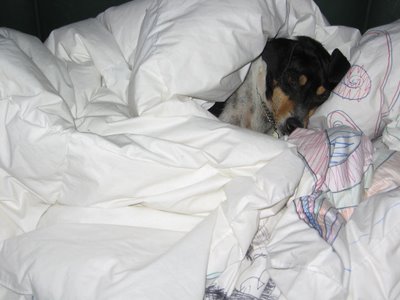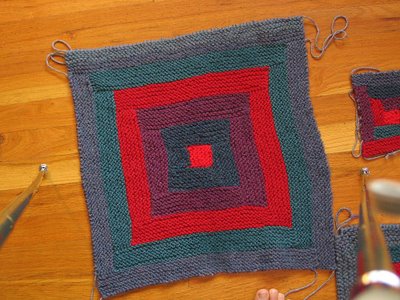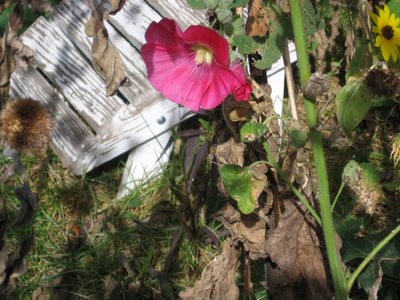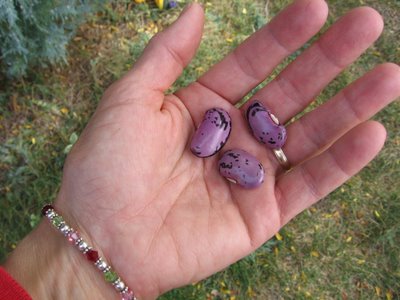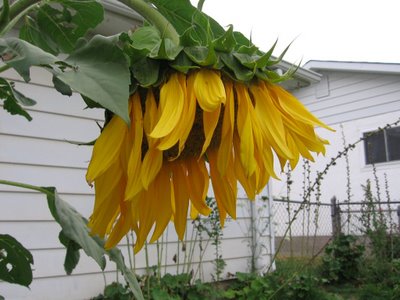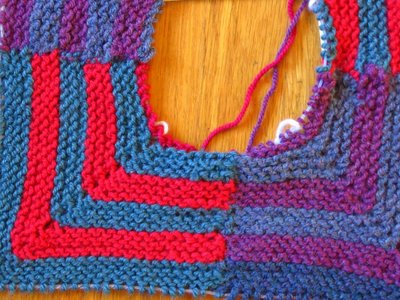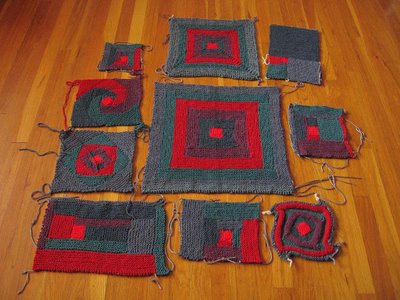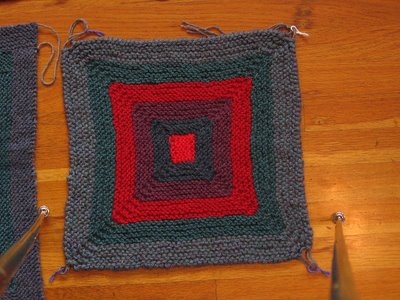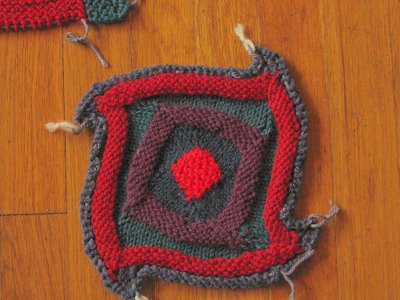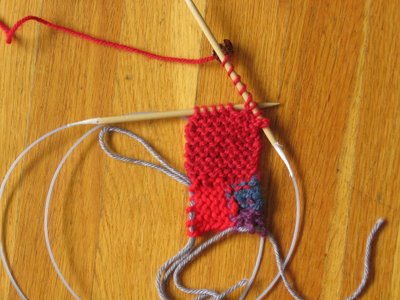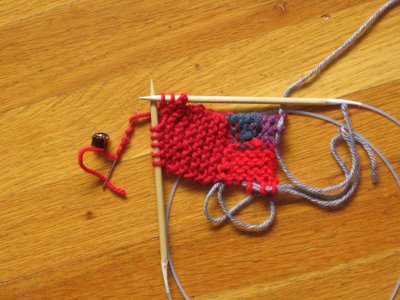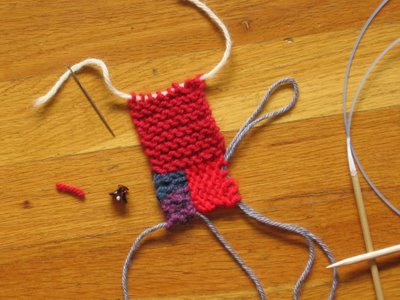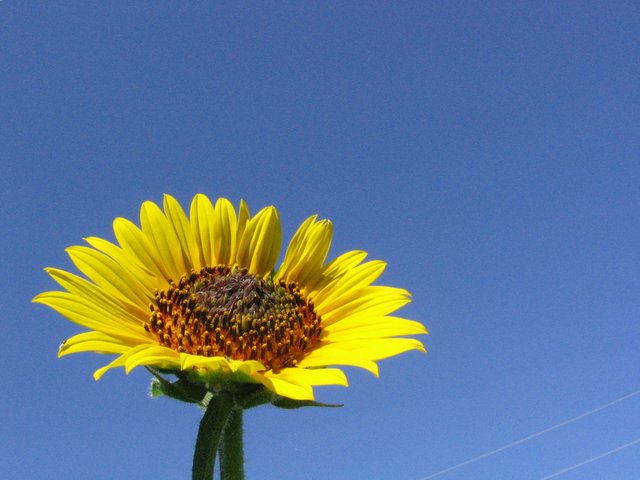Quite a long time ago, my local thrift store ran a special sale on sweaters - 12 for a dollar, if you can believe it. Of course, I stocked up! Last night, I decided to rip one of these sweaters, and make a pair of felted clogs-slippers for my dear, darling husband.
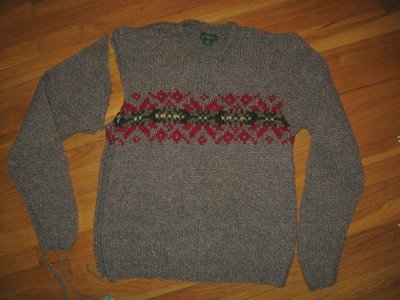 This is a really thick, really bulky sweater. I hope that it felts OK. It's odd - even though it is a wonderfully thick sweater, it is made from really fine yarn. I mean really REALLY fine. The trick is that there are 5 of them held together. Each strand of yarn is two ply - one ply is brown and the other ply is cream, so the result is this wonderful heathery brown (not grey as it looks in the photo). Doesn't that sound like a ridiculous amount of spinning for one strand of knitting yarn? Each ply is just a little bit thicker than sewing thread. Gosh, I hope it felts!
This is a really thick, really bulky sweater. I hope that it felts OK. It's odd - even though it is a wonderfully thick sweater, it is made from really fine yarn. I mean really REALLY fine. The trick is that there are 5 of them held together. Each strand of yarn is two ply - one ply is brown and the other ply is cream, so the result is this wonderful heathery brown (not grey as it looks in the photo). Doesn't that sound like a ridiculous amount of spinning for one strand of knitting yarn? Each ply is just a little bit thicker than sewing thread. Gosh, I hope it felts! Well, last night, I began knitting on my old, home-made circs, which are made of wood. Oooch! Even though the needles are perfectly smooth, from miles and miles of knitting, the yarn really dragged on these wooden needles. I was seeing a headache in my future. While running errands this morning, I came across this set of plastic needles, on the *clearance rack!* Yippee, life is good. I came home, and I didn't even put the perishables in the fridge - I raced out to my garage, and whipped up a pair of circs. Here is a photo at the half way mark. Nifty, eh? They made up really easily - much more easily than I had imagined. These needles are so very smooth, and very lightweight. Yes, this is a good day
Well, last night, I began knitting on my old, home-made circs, which are made of wood. Oooch! Even though the needles are perfectly smooth, from miles and miles of knitting, the yarn really dragged on these wooden needles. I was seeing a headache in my future. While running errands this morning, I came across this set of plastic needles, on the *clearance rack!* Yippee, life is good. I came home, and I didn't even put the perishables in the fridge - I raced out to my garage, and whipped up a pair of circs. Here is a photo at the half way mark. Nifty, eh? They made up really easily - much more easily than I had imagined. These needles are so very smooth, and very lightweight. Yes, this is a good day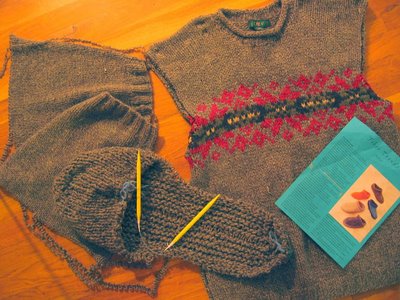
I'm almost done with the first part of the first slipper - as I sit to write this, I'm much farther along on the slipper than the photo indicates. I'm now to the point where I have to knit another sole. I'm really going to run out of yarn!!! Oh well... hubby and I discussed it and we came to the conclusion that slippers *really* don't need to match each other, do they? I'll just make the mate out of another sweater, and hope for a match weight-wise. I think that it would be unpleasant to wear slippers of different weights, don't you?
If you haven't tried the felted clogs pattern from Fiber Trends - well, what are you waiting for? It's relatively easy, once you understand the rhythm of the pattern. What came as a Eureka! moment is when I realized that I don't need to count every row. Simply read ahead, and see what the author tells you what to do *after* the counting - maybe it's to m1k2 2 times, at which point you'll be at the middle stitch. Well, I put a piece of contrasting yarn across the knitting (on top of the knitting, between the stitches, but under the needle - it'll stay there for a little while) at 4 stitches from the middle stitch, which I also have marked, and when I get to the yarn, then I do as I'm told. No counting. Mind you - the knitter doesn't have to count to say... 10. The knitter is asked to count to 79, or 68 or whatever. It's much easier to place the temporary marker.
I’ve knitted this pattern over and over again. It’s great fun. http://www.fibertrends.com/viewer/patterns/AC33x.html



